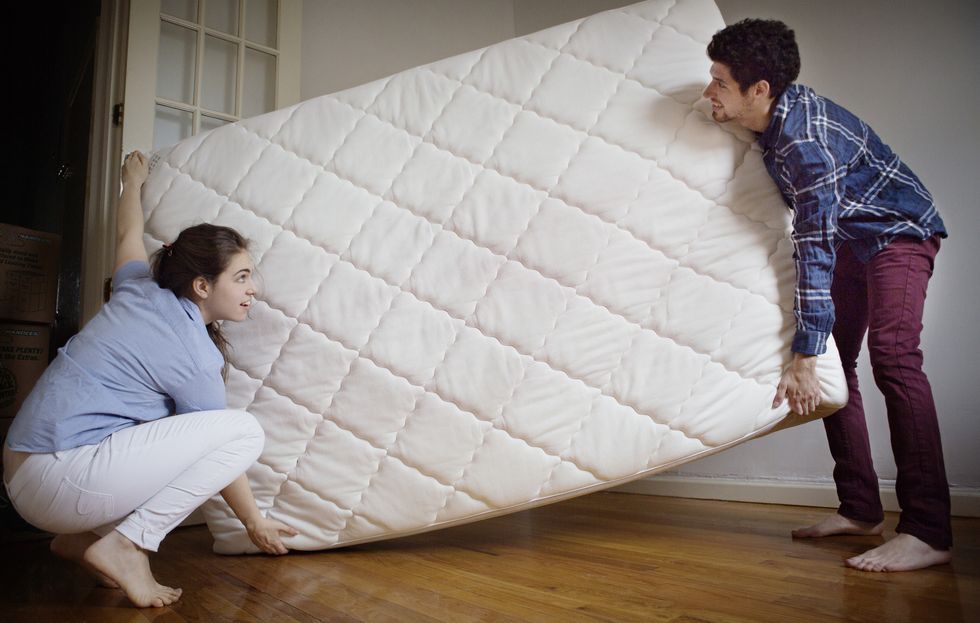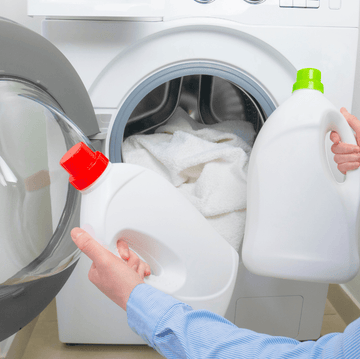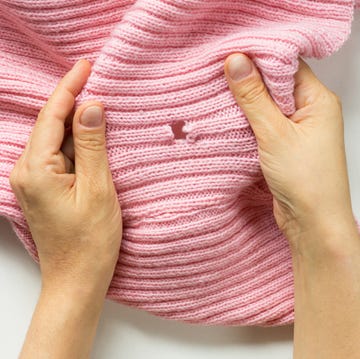Over the last couple of years, making your bed every day has become a virtue. For some, it’s a symbol of productivity, mental wellness and self-care, although for most of us it’s just something we’re taught to do as children. But you may be surprised to hear that this daily habit that you pat yourself on the back for could actually be preventing you from keeping your mattress in good nick.
According to NimbleFins, the average double-sized mattress will set you back £375 for memory foam, £272 for pocket sprung. This is a sizeable investment for most of us, so you want to make sure you’re maintaining its quality for as long as possible, so you’re not splurging out any more than you already have to.
When it comes to mattress care, commonly held beliefs could be more of a hindrance than a help. We consulted the experts at the GHI to separate fact from fiction and ensure you’re not shelling out for a new mattress before you should be.
What to read next
Fact or Fiction?: You should make your bed each morning
Verdict: Fiction
Straightening the duvet and tucking in sheets when you get up might actually be bad for your mattress. But why?
We each lose up to half a pint of water every night as we sleep – more if we’re unwell or if the bedroom has become a sauna, as it’s done for so many of us during this summer's heatwaves. Some of this liquid is exhaled as water vapour, but some leaves our bodies as sweat, which can soak straight into bedding.
By making the bed, we risk trapping this moisture instead of allowing it to evaporate. This image only gets grosser when you realise it creates the perfect conditions for dust mites to set up camp and multiply, says Martin Seeley, CEO of mattress retailer MattressNextDay. ‘Dust mites tend to thrive in warm environments that have a lot of moisture,’ he explains. ‘Many studies show that unventilated bedding, caused by making your bed immediately, can create an environment that leads to higher concentrations of dust mites.’
So, what’s the alternative? Allow the bed to breathe by turning back the duvet and sheets once you get up in the morning, leaving it to air out for at least half an hour before making it. Yes, you can still make it eventually – this isn’t an excuse for never making your bed again, I’m afraid!
A machine washable mattress protector adds an extra line of defence against spills and body fluids. Wash it regularly at the highest temperature recommended on the care label.
Fact or Fiction: You should be turning your mattress regularly to prolong its life
Verdict: Fiction
The type of mattress you own will entirely dictate how often or even if you should be rotating your mattress. The only sure-fire way to know is to check the manufacturer’s care advice.
Important to note: if you don’t follow the manufacturer’s guidance, you may invalidate the warranty on the mattress.
As a general rule, sprung mattresses should be turned and rotated through 180° weekly for the first three months of use, then once every three to four months. This allows the filling to settle more evenly and helps distribute wear and tear.
Often, mattresses that feature an upper layer of memory foam or gel foam are designed with one sleeping surface only. Flipping these would be pointless, as you won’t get the benefits of the comfort layer on top of the mattress and the supportive base.
Instead, memory foam and gel foam mattresses should be rotated end-to-end weekly at first, then once every few months.
Fact or Fiction: Mattresses need to be vacuumed regularly
Verdict: Fact, in most cases
This is a fact that’s not for the weak of heart, or stomach. Along with sweat and body fluids, the dead skin cells we shed at night also find their way into sheets, duvets, pillows and mattresses. Again, this helps make our beds very appealing habitats for dust mites, which can inflame allergies.
Nearly 6 in 10 people who suffer from indoor allergies say their symptoms feel worse in the bedroom, according to the National Bed Federation. This is perhaps unsurprising, given that dirty bedding and mattresses have been proven to cause allergic reactions, illnesses and infections, and spread viruses in some cases.
Get into the habit of vacuuming your mattress every couple of months using the upholstery attachment of your vacuum cleaner. Just ensure you check the manufacturer’s care advice on whether it permits this, as some claim it can dislodge the mattress filling.
While you have the vacuum out, clean the bed frame or base thoroughly at the same time. It’s also important to vacuum behind and under your bed. Dust, skin cells and hair can easily collect back there, and dust mites thrive in these conditions.
Fact or Fiction: Bedding should be washed weekly to keep your mattress in good condition
Verdict: Fact
According to a survey by Hammonds Furniture, one in three people only wash their sheets once a year! Unacceptable. Needless to say, you need to wash your bedding far more than this — at least once a fortnight, to be exact. Changing bedding less often than this could encourage dust mites, which can survive in unwashed bedding and mattresses.
Washing at a minimum temperature of 60°C can help prevent mites from settling in your bed. Using a machine-washable mattress protector is also recommended, to keep sweat and other body fluids from reaching your mattress.



















